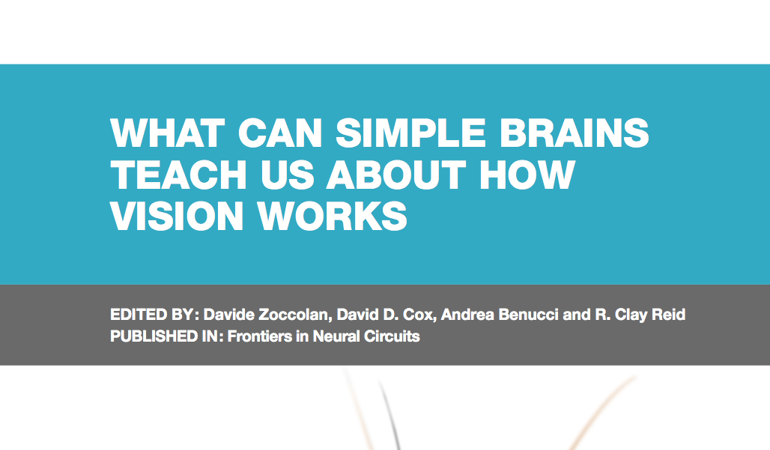
- SISSA Press Office
- Nov 19, 2015
A new ebook on vision research has just been published by Frontiers Media. The book title is “What Can Simple Brains Teach Us about How Vision Works” and Davide Zoccolan (SISSA) is one of the co-editors of the volume, together with Andrea Benucci (Riken Insitute) and Clay Reid (Harvard Medical School).
You can find the ebook free for download, here
Book’s astract:
Vision is the process of extracting behaviorally-relevant information from patterns of light that fall on retina as the eyes sample the outside world. Traditionally, nonhuman primates (macaque monkeys, in particular) have been viewed by many as the animal model-of-choice for investigating the neuronal substrates of visual processing, not only because their visual systems closely mirror our own, but also because it is often assumed that “simpler” brains lack advanced visual processing machinery. However, this narrow view of visual neuroscience ignores the fact that vision is widely distributed throughout the animal kingdom, enabling a wide repertoire of complex behaviors in species from insects to birds, fish, and mammals.
Recent years have seen a resurgence of interest in alternative animal models for vision research, especially rodents. This resurgence is partly due to the availability of increasingly powerful experimental approaches (e.g., optogenetics and two-photon imaging) that are challenging to apply to their full potential in primates. Meanwhile, even more phylogenetically distant species such as birds, fish, and insects have long been workhorse animal models for gaining insight into the core computations underlying visual processing. In many cases, these animal models are valuable precisely because their visual systems are simpler than the primate visual system. Simpler systems are often easier to understand, and studying a diversity of neuronal systems that achieve similar functions can focus attention on those computational principles that are universal and essential.
This Research Topic provides a survey of the state of the art in the use of animal models of visual functions that are alternative to macaques. It includes original research, methods articles, reviews, and opinions that exploit a variety of animal models (including rodents, birds, fishes and insects, as well as small New World monkey, the marmoset) to investigate visual function. The experimental approaches covered by these studies range from psychophysics and electro- physiology to histology and genetics, testifying to the richness and depth of visual neuroscience in non-macaque species.
